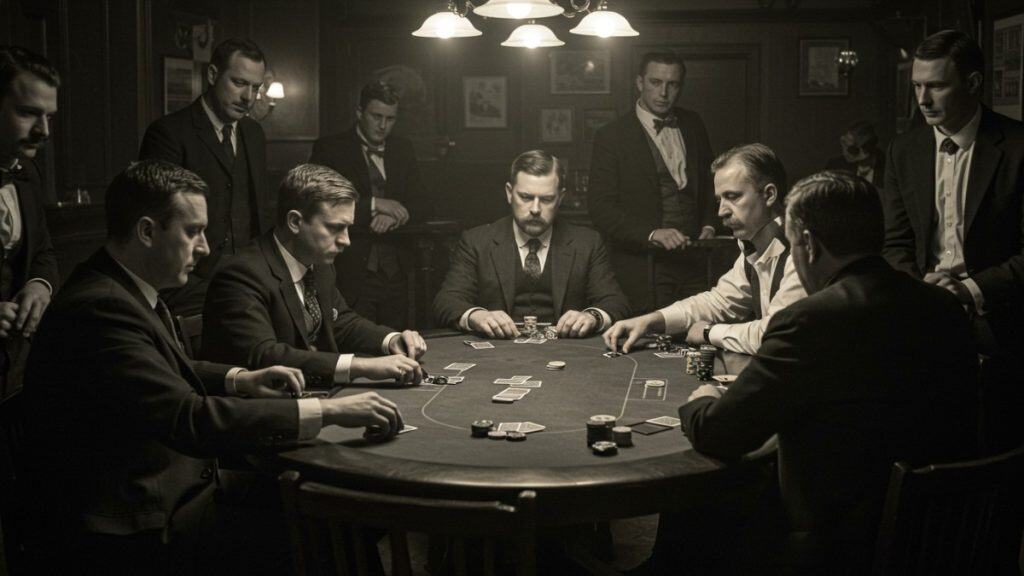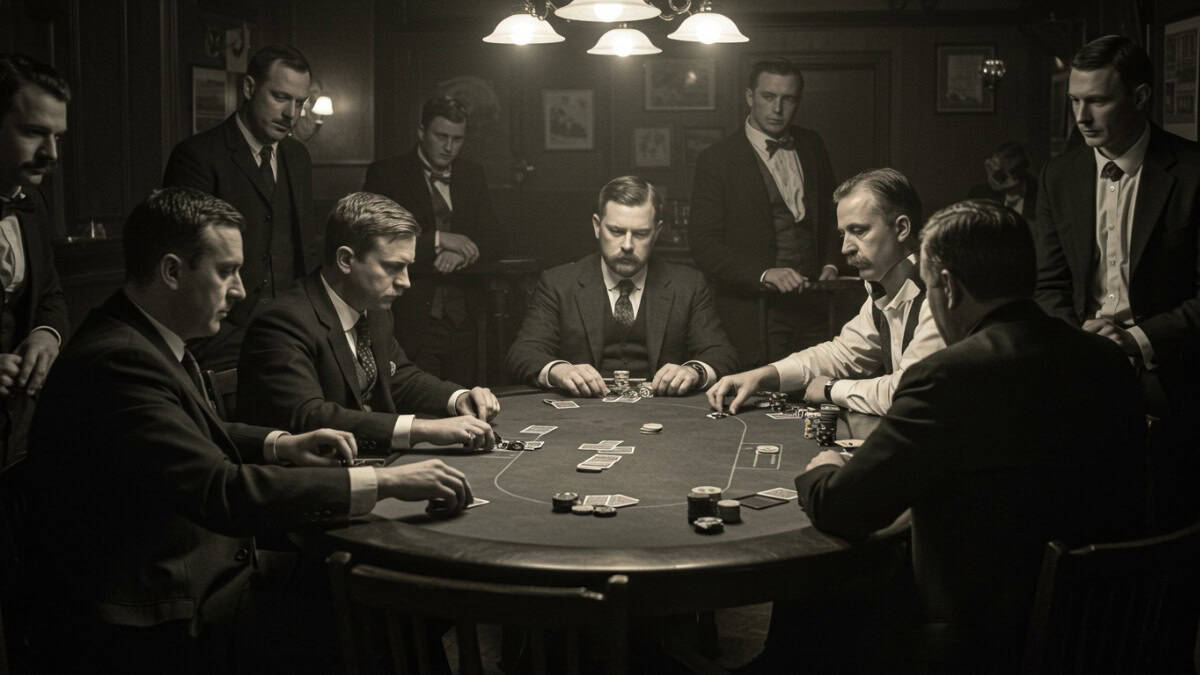
Poker History Explained – Origins, Legends & Online Evolution

Poker has come a long way from its early days. What started as a mix of Persian, French, and German card games found new life in 18th-century New Orleans. From there, it spread up the Mississippi River aboard gambling riverboats and slowly took shape into the game we recognize today, complete with a 52-card deck and ranked hands.
By the mid-1800s, poker had become a staple of the American frontier. In Wild West saloons, it was more than just a pastime – it was part of the culture, with legends like Wild Bill Hickok adding to its mystique.
As the game grew, new variants emerged, Vegas became its new home, and the World Series of Poker helped shift its image from pure luck to skill. Movies like Rounders and a televised poker boom in the early 2000s brought the game to millions more.
Though online poker took a hit in 2011, the game continues to evolve. Today’s players use AI tools and game theory, proving that poker still thrives in the digital age.
Tracing Poker’s Origins
Long before poker took over saloons and casinos, the game’s roots had already traveled across continents. Many historians believe it all began with a 16th-century Persian game called As-Nas. It was played with a small deck and, just like modern poker, relied on betting and bluffing, two traits that would come to define the game we know today.
As the game evolved, similar versions began appearing in Europe. In France, a popular 17th-century game called Poque introduced players to strategic wagering and ranked hands. Meanwhile, in Germany, the game Pochen shared comparable features, including bluffing. Even the name Pochen translates loosely to “to knock off” or “to bluff.”
Poker took a transformative turn when it arrived in North America. French Colonists brought Poque to the port city of New Orleans in the early 18th century. At the time, New Orleans was one of the busiest ports in North America, drawing people from around the world. There, in gaming halls, aboard riverboats, and along the waterfront, Poque blended with other card games and slowly evolved into something new.
Early American poker was played with a 20-card deck and four players, each dealt five cards. Betting was the heart of the game, with bluffing emerging as a key tactic, much like in its European predecessors. However, the unique social and economic conditions of New Orleans gave poker a new identity. It was less a pastime for the elite and more a game of opportunity.
Poker in the Wild West
Around the 1830s, as steamboats carried poker up the Mississippi River, the game began to change. Early versions used 20 cards and were pretty straightforward. However, the lively, competitive atmosphere of riverboat gambling required something more. That push for depth and variety led to the adoption of the full 52-card deck, making room for more players and a wider range of hands.
By the mid-1800s, hand rankings began to standardize across different regions, with gamblers and riverboat operators seeking a more consistent ruleset. Flushes and straights became widely accepted, along with the hierarchy of hands that resembles what we use today.
As settlers pushed westward in the 19th century, entertainment was scarce in frontier towns. Poker, however, filled that void, offering both distraction and opportunity. It quickly became a way of life.
Whether played on a barrel table in a dusty boomtown or a smoke-filled saloon, frontier poker games were often high-stakes affairs where reputation mattered almost as much as the cards in hand.
The Rise of Modern Poker
As the 20th century moved forward, poker began to shed its saloon origins and steadily grew into a national, and eventually global, phenomenon. Once a gritty pastime of frontier towns and riverboats, it evolved into a more refined and widely embraced game that took hold across the country.
Growing in popularity, new variations of poker began to emerge, such as five-card draw, seven-card stud, and eventually Texas Hold ’em. Each game presents a distinct strategy and style of play. These versions took root in homes, private clubs, and underground cardrooms, turning poker into a cultural staple shared across communities.
Poker’s transformation, though, was nowhere as visible as in Las Vegas. Finding a permanent home in the city’s booming casino scene. By the mid-20th century, Vegas had become the new capital of gambling in America, and poker was one of its main attractions. High-stakes games and professional dealers brought an air of legitimacy that the game had long lacked.
Everything changed in 1970 with the launch of the World Series of Poker. Casino owner Benny Binion conceived the idea of gathering the top players in one place and naming a single world champion. As the tournament grew, with larger prize pools and televised coverage, people began to view poker in a different light. It was not just a game of luck but one that required skill and strategy.
Poker’s Pop Culture Boom
Well before cards appeared on television tables, poker had already found its place in the starring role of American films. From dramatic showdowns to masterful bluffs, movie makers saw drama in the game’s combination of skill, chance, and psychology. Classic films like The Cincinnati Kid (1965) and Maverick (1994) captured the gritty, high-stakes romance of poker.
However, it wasn’t until Rounders was released in 1998 that poker received a truly realistic portrayal. With Matt Damon and Edward Norton leading the cast, the film gave viewers a close-up look at the underground world of serious poker. Complete with dramatic bankroll swings and the intense pressure of tournament play. For many players who came after, Rounders became a cult favorite and an introduction to the game itself.
Then came the poker boom in the early 2000s. Tournament poker on television, such as the World Series of Poker, increased exponentially in popularity. Innovations like the “hole cam,” which enables viewers to see the players’ hidden cards, brought about a new experience for the audience. In the blink of an eye, poker was more than a game; it was a televised sport. Cable channels devoted hours to dramatic hands, celebrity charity events, and late-night poker programming.
Household names like Phil Hellmuth, Daniel Negreanu, and Doyle Brunson became fixtures on screen, while celebrity tournaments added a touch of Hollywood glamour. Poker had gone mainstream, and pop culture had dealt it a winning hand.
From MoneyMaker to Black Friday – Poker’s Online Revolution
In 2003, a Tennessee accountant named Chris Moneymaker turned a $86 satellite entry into a 2.5 million dollar World Series of Poker main event win, forever changing the game of poker. His unlikely victory, watched by millions, sparked a global poker craze.
In a flash, anyone with a computer and a dream believed they could go from their living room to Las Vegas glory. Online Poker rooms, such as Full Tilt Poker, PokerStars, and PartyPoker, experienced a massive surge in players. People from all over the world logged in around the clock, fueling a multi-billion-dollar poker boom. These online sites offered low-stakes games, big tournaments, and an easy way to play that traditional casinos couldn’t match.
However, the boom wouldn’t last forever.
On April 15, 2011, a day referred to as “Black Friday,” the US Department of Justice unsealed indictments against major online poker sites, accusing them of bank fraud, money laundering, and illegal gambling. Domains were seized, assets were frozen, and overnight, millions of American players were locked out of their accounts.
The crackdown effectively ended the golden era of online poker in the United States, pushing the game back into smaller, regulated markets and halting its explosive growth. While online poker still exists in parts of the country, the freewheeling days of virtual tables packed with hopeful amateurs and overnight millionaires are now a thing of the past.
Poker Today – Evolving Beyond the Boom
While the spotlight has dimmed since the early 2000s boom, poker remains a global game with a devoted following. Though no longer drawing the same primetime TV coverage or casual player frenzy, the modern poker scene is sharper and more technical than ever.
In today’s landscape, innovation is driving change. New formats, such as short-deck poker, which utilizes a 36-card deck and alters hand rankings, and Zoom Poker, where players are instantly moved to new tables after each fold, offer speed and action that cater to online audiences and high-volume players.
More significantly, the way poker is studied and played has changed. The rise of game theory optimal solvers and AI-driven training tools has ushered in a new generation of highly analytical players. These modern pros approach the game less like gamblers and more like data scientists.
Although the golden age of poker on television may be behind us, the game itself continues to evolve.